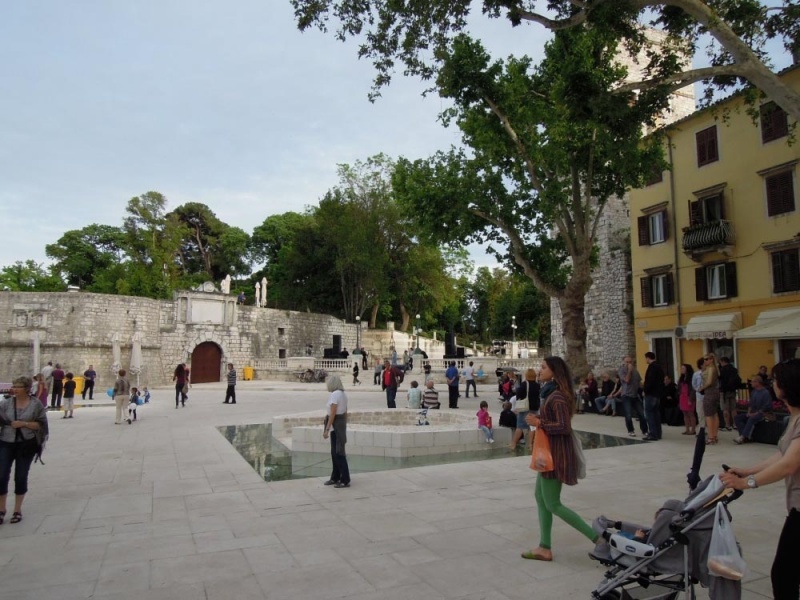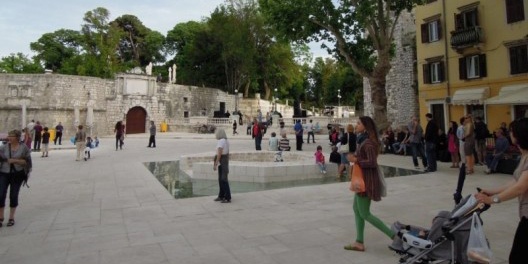«Recovering the city’s most genuine values means not being able to dispense with the irreplaceable legacy we call heritage, which is one of the consubstantial vectors of European culture».
Among the set of decisions to be taken in initiatives to reconquer public space in the European city is reassessment of heritage. This is so much the case that it is not surprising to see that urban planning projects to improve places shared by citizens frequently incorporate a historical perspective which inevitably enriches them. It could not be otherwise. The European city is characterised by its public space but, also and simultaneously, by its evolution over time in a process which has shaped its topography, transferring elements, form, functions and meanings. Recovering the city’s most genuine values means not being able to dispense with the irreplaceable legacy we call heritage, which is one of the consubstantial vectors of European culture.Longevity is, then, a distinctive value of European cities. In the European Archive of Urban Public Space there are quite a lot of cases exemplifying the interaction between heritage and public space. However, this relationship is not always positively interpreted. Sometimes the prevailing view is that the interests of the present-day city are at odds with protection and conservation of elements inherited from the past. This produces a conflict which, if analysed, is often and more recently linked with effects deriving from intensive economic benefits of certain urban uses rather than with the mere physical presence of heritage vestiges. Such positions have become so radicalised that it might even appear that a city’s architectural and archaeological heritage is responsible for overcrowded city centres, their increasing themeparkisation and all the counterproductive effects of gentrification of urban centres as a result of the tourist business. It may also be blamed for excessive invasion of some of the city’s spaces to the detriment of everyday uses, or of having an overly determinant or even unexpected influence on urban projects that are still in the planning stages.
In fact, this situation links up with a deeper, weightier debate, namely that pertaining to the criteria that should be observed when approaching questions like what we deem to be heritage, what recognition it should be accorded as monuments, and how the emergence of new urban heritage should be treated, as well as its necessary appropriation by citizens. If this discussion could be fully integrated into the prospects for the city’s regeneration through its public spaces, old prejudices might be shed—these being equally shared by people described as conservationists and advocates of untrammelled urban modernisation—to advance towards a more intelligible vision of the urban phenomenon.
On the basis of this amended standpoint, heritage could become a key question in the interventions proposed for urban improvement. In other words, in the same way as nature has become an unavoidable factor in any urban project, planning can also be done taking heritage into account. Introducing the temporal dimension should make it possible to rethink transversally the work of recovering spaces, whether it is through their environmental values, changes in mobility or, in particular, endowing areas designated for meeting and socialisation with values of symbolic representation, an aspect of urban planning activities which has always been of prime importance since time immemorial. In other words, the urban metabolism must be compatible with appreciation of the city as an artefact and product of its historical evolution, and it should be included in the range of urban policy decisions that seek to aim to transform inherited realities and inertias.
This, at least, is demonstrated by some of the outstanding projects in the Archive, for example the Bow Riverside intervention in London where recovering old East End canals as a core element of the place’s identity entailed the challenge of constructing a network of paths for pedestrians and cyclists in continuity with a zone marked by a busy road junction. On another level, Roman and medieval archaeological discoveries in Petar Zoranić Square in Zadar (Croatia) were the catalyst for a project to recover the centrality of this public space, not only making it compatible with the ancient ruins but applying classical restoration techniques, namely anastylosis whereby early architectural remains are reconstructed in order to achieve a perfectly balanced interdependence between heritage and the elements that shape public space.
An essential aspect of this tandem is intervention in old city centres. When a harmonious symbiosis between public space and heritage is the starting point it becomes possible to reconsider traditional processes applied to the original nuclei which prioritised visualisation of monuments in plans introducing porousness into old urban layouts and, subsequently, how these clear, open spaces were turned into open-air car parks. Many centres of European cities today are the result of the superimposition of this series of projects which have shaped a very standard image of old neighbourhoods. Projects like the «Stadshal» (Market Hall) in Ghent, Belgium, and the Neubau der Domtreppe in the German city of Köln have sought to rectify such urban planning practices by means of new built-up density and re-creating the original topography while always avoiding historicist reconstruction and using strategies for improving citizens’ uses of public space.
However, the most intense convergence of public space and heritage has probably occurred with the recovery of overlooked, almost invisible heritage. In contrast with buildings and complexes which are well recognised as having belonged to historical periods prior to industrialisation, there are also other structures related with the world of production, work, technology and infrastructure which have not yet obtained any kind of heritage protection even though they conserve historic memory which is very much alive. This is certainly where the reconquest of public space has played a crucial role in preserving this heritage, especially in cases of industrial architecture, disused railway lines which are turned into cycling and pedestrian tracks, old port spaces and so on. Some examples of this are the «C-Mine» Cultural Square in Genk (Belgium), the «Baana» corridor in Helsinki, and Opening of the Seaplane Harbour, in Tallinn (Estonia) which has enabled the conversion of the old seaplane hangar into a museum centre while simultaneously opening up the city to the sea. Meanwhile, functional constructions like the medieval underground water tanks in Plaza del Torico in Teruel have been recovered as heritage which is open to the public now that the square has been given back its former value as a central urban space after cars were banned and the area given new dignity by means of appropriate design of elements like paving and lighting which are so important in the expression of public space.
A highly contemporary lesson may be drawn from this joint work of heritage and public space: restitution of original functions becomes one of the primordial conditions for preserving physical structures. But this does not imply a literal return to old uses but, rather, incorporating them as a key factor of the structure’s legibility. This undoubtedly gives more depth to their heritage value. Bearing in mind the functions and uses of things gives new dimensions to lesser known items of heritage and helps to make them more appreciated, while also playing an important part in encouraging citizens to embrace them as their own.
When added to other indisputably recognised examples of heritage these more recent acquisitions bring about an effect of high heritage density in which the influence of history becomes decisive in shaping urban settings of great meaning. This is clearly demonstrated with the new Danish Maritime Museum at Helsingør, next to the renaissance Kronborg Castle which Shakespeare used as the setting for Hamlet. At the other end of the spectrum is the project titled Restoration of the Hilltop Site of Turó de la Rovira in Barcelona, which shows how rethinking the recent past can be the result of a reading which does not underestimate any of the different processes which have shaped the contemporary city. There is no doubt that this is an extraordinary example of the emergence of new kinds of urban heritage today.
Observing a high density of heritage should be a criterion to be borne in mind when urban planning action is taken. This idea is consistent with what the urban planner Diane E. Davis said when referring to the Zócalo in Mexico City as her favourite public space since it is a site with a long past of struggles and urban memory which has made it a living archive of the city’s history. Heritage, then, is an essential element of urban complexity, past and present, and a key factor when it comes to people appropriating the public spaces they occupy. Advocating public spaces in the city also means supporting intelligent, respectful integration of its heritage.
Teresa Navas │ Translation by Julie Wark





